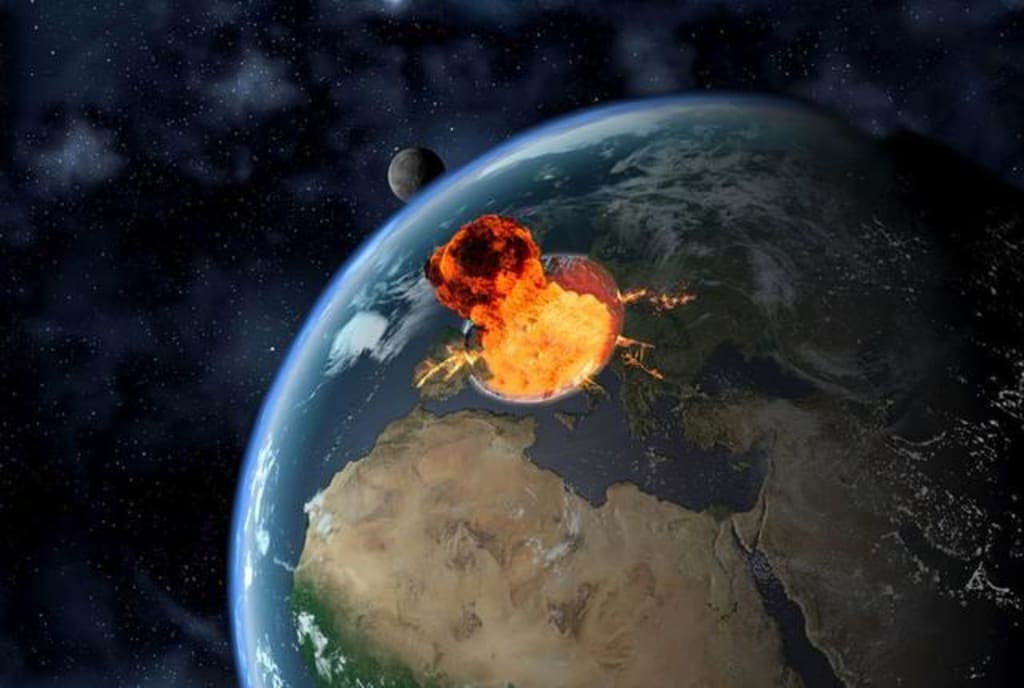Indian boy Anand predicts how terrifying nuclear war will be at the time of World War 3
Can Indian boy Anand's prophecy come true?

The third world war is a topic of concern, because with the continuous development and progress of modern weapons, the form and lethality of future wars are constantly changing. Especially with the emergence of nuclear weapons, it has brought an indelible shadow to future wars. Just in March, Anand, known as the Indian prodigy, also published a video predicting the possible time of the third world war, so what predictions did the Indian boys have for the time of the third world war, and if the third world war broke out? How terrifying would three world wars be?
Indian boy predicts when World War 3 will happen
Anand predicted in a video on March 5 that there would be no World War III in the near future. The possible time for World War 3 to happen is between 2029 and 2032. And said that if there is a third world war in the future, this war will greatly change the way people look at the earth. Coincidentally, even Russia's foreign minister has said that the risk of nuclear war is real, and its danger cannot be underestimated.
So how terrible would a third world war be?
In fact, there is a deep connection between the third world war and nuclear weapons, because people today generally believe that if a third world war really breaks out in the future, then the outcome of this war is very dangerous, and the degree of danger is much higher in World War II. The main source of danger is the use of nuclear weapons. Due to the development of nuclear weapons in the Manhattan Project, which caused two atomic bombs to explode on Hiroshima and Nagasaki and cause very many casualties, and were later developed and deployed by many countries, the potential risk of nuclear catastrophe leading to the destruction of extensive planetary civilization and life is the third World War II hypothetical theme. A large-scale nuclear war will lead to the end of the world for human civilization, and even make it impossible for many life to survive on the surface of the earth. (The closest point in human history to a full-scale nuclear war ever - the Cuban Missile Crisis is considered the closest point to a nuclear war that could trigger World War III. The Cuban Missile Crisis, also known as the October 1962 Crisis. Although the Cuban Missile Crisis The crisis was relatively short-lived, but the Cuban Missile Crisis is often considered the closest the Cold War came to escalating into a full-scale nuclear war).
The shockwaves and heat from the explosion of a nuclear weapon can instantly end the lives of millions of people. But even bigger is the devastation after nuclear war. The first reason is nuclear radiation. The radioactive fallout from detonating bombs rises into the atmosphere and spreads over large swathes of the world, falling from there and causing lethal levels of radiation. The second reason is less well known. But that consequence - a "nuclear winter" and the ensuing global famine - is now considered the worst consequence of nuclear war.
Cities hit by nuclear missiles burn with such intensity that they create their own wind system, a storm: hot air above the burning city rises and is replaced by air rushing in from all directions. The storm fanned the flames and created enormous heat. From this fire storm, massive amounts of smoke and soot rose from the burning city, all the way up into the stratosphere. There it spreads around the Earth and blocks the sun's light. (At such a high altitude, well above the clouds - it will cause rain to not be able to carry away the soot either) That means it will stay there for years, darkening the sky and making the planet dry and cold. A nuclear winter following a large-scale nuclear war is expected to cause temperatures to drop by 20 or even 30 degrees Celsius (60-86°F) in many agricultural regions of the world, including much of Eurasia and North America. A nuclear winter will lead to a "nuclear famine". World food production will fail and billions of people will go hungry.
A study published in 2019 suggested that a slightly lower 150Tg of atmospheric soot could be injected into the atmosphere after a large-scale nuclear war. The destruction created so much smog that only 30-40% of sunlight reached the Earth's surface for the next six months. Temperatures then dropped sharply, and the weather remained below freezing for the ensuing northern hemisphere summer. In Iowa, for example, the model shows temperatures staying below 0°C for 730 consecutive days. There is no growing season. This is a true nuclear winter. It wasn't just a short-lived blip, either. In the years that followed, summer temperatures remained below freezing, and global precipitation fell by half in years three and four. It would take more than a decade for a normal climate like this to return to Earth.
By this time, most of the Earth's population will be long dead. World food production will be reduced by more than 90%, leading to a global famine that will kill billions of people. Under these conditions, in most countries, less than a quarter of the population survives by the end of the second year. Global fish stocks have plummeted and the ozone layer has collapsed.
Even a nuclear war scenario of 150Tg soot is orders of magnitude less than the smoke and other particulate matter released into the atmosphere by an asteroid that hit Earth at the end of the Cretaceous period 65 million years ago, when the asteroid killed the dinosaurs and about two-thirds of living species. This means that some humans will survive and eventually repopulate the planet, and it is unlikely that Homo sapiens will become extinct at the species level even after a full-scale nuclear war. But the vast majority of humanity will suffer a painful death from burns, radiation, and starvation, and human civilization may collapse completely. The survivors will live on a devastated, barren planet to make ends meet (though this process will improve over time).
Therefore, if there is a third world war, which leads to the outbreak of a full-scale nuclear war, it will undoubtedly be devastating to the creatures of the earth. Although there are still some species of human beings who can survive the outbreak of the war, it is more painful to survive on such a devastated planet. In short, we humans still have to be kind to the earth and nature, and not to destroy our originally beautiful planet because of human selfish desires.
About the Creator
sayre laylah
Tired of monotonous climbing moves, but every step is close to the top
Enjoyed the story? Support the Creator.
Subscribe for free to receive all their stories in your feed. You could also pledge your support or give them a one-off tip, letting them know you appreciate their work.





Comments
There are no comments for this story
Be the first to respond and start the conversation.